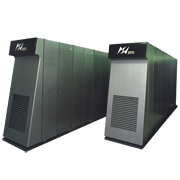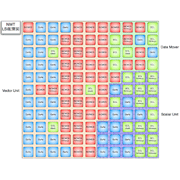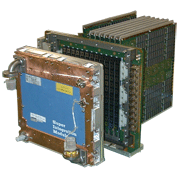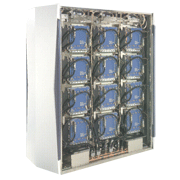Under the leadership of Miyoshi Hajime, a senior manager at the laboratory at the time, the National Aerospace Laboratory of Japan (which merged with the Japanese Aerospace Exploration Agency (JAXA) in October 2003) developed the Numerical Wind Tunnel (NWT) parallel supercomputer system in partnership with Fujitsu. The NWT, which went into operation in January 1993, was truly groundbreaking. It was rated as the most powerful supercomputer site in the world by the TOP500 project from 1993 to 1995 and stayed at No. 3 in the world until November 1997. The NWT remained in use for nine years after its introduction.
The National Aerospace Laboratory had been using computers since the 1960s to process data and to develop methods of analyzing aircraft aerodynamics. Based on experiences with the FACOM 230-75 APU, Japan’s first vector computer developed and introduced in 1977 in close partnership with Fujitsu, the National Aerospace Laboratory embarked, in an active partnership with Fujitsu, on developing a supercomputer and numerical simulation technologies to execute full-scale numeric simulations. The first-phase numerical simulator, the NS-I, which arrived in 1987, used the FACOM VP-400 as its core machine and was capable of analyzing 3D viscous flow fields around wings and analyzing inviscid flow fields around entire plane bodies. The NWT, however, was developed specifically to run more complex simulations.
The NWT was developed with the objective of finding compressible viscous flow analytic techniques based on the Navier-Stokes equations. The goal was to deliver more than 100 times the performance of the FACOM VP-400 so that the NWT could calculate one million lattice points needed to solve parameters in just 10 minutes. To realize this, the developers devised a distributed memory parallel vector computer architecture in which vector supercomputers were connected with crossbar switches. The NWT’s final specifications were 166 processing elements, each with 1.7 gigaFLOPS of processing power, and two control computers to give a peak performance of 280 gigaFLOPS with 44.5 GB of main memory.
The NWT’s processing elements consisted of a CPU and memory. The CPU board used three types of LSIs: BiCMOS, ECL, and GaAs. It is believed to be the only practical computer that used GaAs. There were two cooling systems. The CPU boards were cooled by pressing a springy, copper bellows, through which a coolant passed, against the LSI package surface, thereby conducting heat from the LSI to the water. After circulating around the 121 LSIs, the coolant passed through to the next CPU board and continued on sequentially before accumulating at a heat exchanger. This was the primary cooling system. The heat from the primary system was absorbed by coolant in a secondary cooling system installed on the outside of the building. Because the memory chips were attached to the back of the CPU board and cooled by forced cool air, they were cooled by the coolant and normal air conditioning. Despite this, the temperature of the air exhausted from the top of the cabinet reached 45℃ after passing through four layers of processing element boards.
The main feature of the NWT from the user’s standpoint was the creation of a global logic space in the physically distributed memory. Hardware movers were incorporated to simplify this software-mapping technology. The ability to define in Fortran the array data distributed among multiple processing elements as a global space for aerodynamics modeling (CFD simulations) — which habitually required large-scale analyses — greatly simplified the porting of existing code and the development of new programs on parallel computers. This, in turn, contributed hugely to the laboratory’s R&D progress.
The introduction of the NWT allowed the National Aerospace Laboratory to run full-scale parallel simulations. The NWT was an extremely powerful and practical machine. It was used in a vast range of fields, from base research, such as turbulence simulations, to the development of aircraft and spacecraft, such as the HOPE-X, a Japanese experimental spaceplane project, and the NEXST, a compact supersonic jet.
Fujitsu developed the VPP500 commercial supercomputer, announced in September 1992, based on the NWT development project. The main differences between the two supercomputers were the clock frequencies and the front-end processors.
| Processing element (PE) nodes | 166 |
|---|---|
| Control processor (CP) nodes | 2 |
| Network | Two 421 MB/s crossbar networks |
| PE memory | 256 MB (however, 1 GB for every four PEs) |
| Clock cycle | 9.5ns |
| PE performance | 1.7GFLOPS |
| Total performance | 280gigaFLOPS 45GB |
| Front-end processor (FEP) | Two 63.8 MIPS NWT-FEP processors with 256 MB of memory each |
| CP/PE operating system | UXP (based on UNIX SVR4) |
| FEP operating system | MSP, UXP (based on UNIX SVR4) |
| Programming languages | NWT-Fortran, Fortran-77, Fortran-90, C |
| Parallel libraries | PVM, PARMACS,MPI |
| Total power consumption | 1,000kVA(3kW/PE) |






